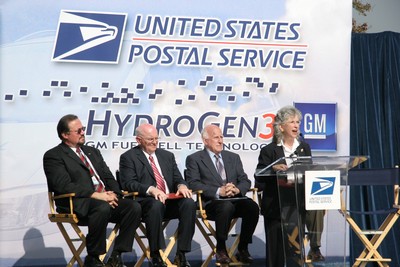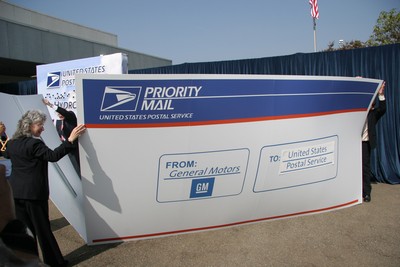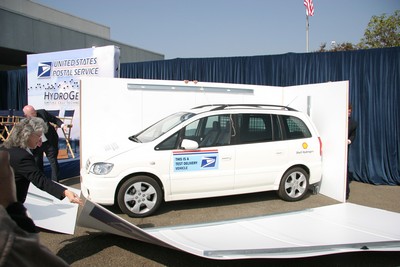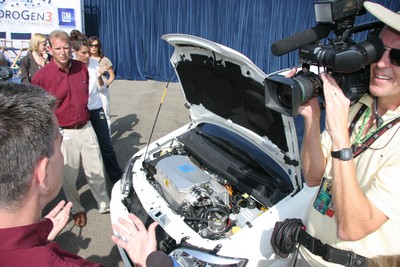
General Motors has put another hydrogen vehicle on public streets for testing.
The U.S. Post Office on Wednesday took delivery a GM HydroGen3 fuel cell minivan that will be used on routes in Irvine California. The Post Office already has a fuel-cell delivery vehicle in Washington D.C. conducting cold-weather tests. Read about the special delivery of the hydrogen vehicle and see more photos after the jump.

The delivery ceremony included officials from the Post Office, GM, Department of Energy and South Coast Air Quality Management District. Following a round of comments, a Priority Mail delivery box was opened to reveal the vehicle.
Walter Tormey, an engineer with the Post Office, says a penny increase in the price of fuel at the pump cost the Postal Service $8 million a year. The Post Office has a fleet of 200,000 vehicles, 30,000 of which are alternative fuel.

The DOE's Sigmund Gronich said testing programs like the GM-PO collaboration gather data that is fed back into research programs, allowing his department to stay focused on "relevant issues."
Miguel Pulido of the SCAQMD and mayor of nearby Santa Ana said there are currently 14 hydrogen refueling stations. "We're building the infrastructure in a way to turn over a new page," said Pulido.
Finally, Roz Sell of GM's commercial fuel-cell division, said the automaker will "seek to validate a fuel cell system by 2010."

The HydroGen3 bears little resemblance to the powertrain in the Sequel that GM showed off recently or the 100 Equinox fuel cells that will be placed in field next year. Those vehicles have the Gen IV fuel cells. The HydroGen3 has a 95kW fuel cell system and a FWD motor. Storage is 3.1kg at 10,000 psi, giving the vehicle a 180-mile range.
Post office officials say the vehicle will be used three days a week with GM engineers from their Torrance, CA, facility picking it up after each shift to download the data and service the vehicle.
Despite not using a current generation system, GM engineers say they will get relevant and useful information that will help develop the first production version set to debut around 2010.


Sign in to post
Please sign in to leave a comment.
Continue